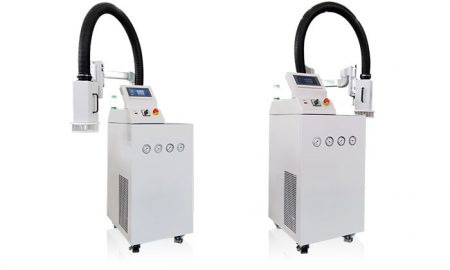Thermal Cycling Systems
Thermal cycling systems are air circulation impact equipment used for hot and cold testing of electronic components/modules. A complete system includes a control system, refrigeration system, temperature setting system and air circulation system.
1. Control system
The control system is the core of thermal cycling systems. The control system determines important indicators such as the heating rate, accuracy, and whether there is program control of the thermal shock machine. Most of the temperature control modes currently used include AIR temperature control mode; DUT temperature control mode; and AIR and DUT temperature simultaneous feedback mode. You can choose manual mode or program mode to operate.
2. Refrigeration system
Thermal cycling systems are purely mechanical refrigeration systems designed to provide high-volume, high-flow, temperature-controlled airflow in a closed, thermally isolated environment. The dry and clean gas used by thermal cycling systems has no pollution, stable air flow, no vibration, and no consumption. The equipment adopts unique single compressor technology and is a system that can release -80°C temperature at 18SCFM (8.5 l/s) flow rate, with very rapid heating and cooling rates.
3. Temperature setting system
To achieve a predetermined temperature, use the temperature setting. It mainly relies on the temperature sensor, which senses the temperature and conveys real-time signals to the control system to achieve the predetermined temperature. You can also enter the setting value on the operation interface, set the running time of this set value (temperature), and set the deviation of the set value (temperature) to control the temperature accuracy. Then activate and implement the settings.
4. Air circulation system
The insulating glass enclosure (or other heat shield) of thermal cycling systems prevents ambient air from entering, creating an enclosed, repeatable heat transfer environment. The glass cover is usually placed on the test fixture, with the airflow impact centered on the sample to be tested. Silicone foam insulating pads are often used to thermally isolate the product under test from the supporting surface.

Strahlenschlagprüfmaschine der Serie AES
Temperaturregelbereich: -120°C ~ +225°C
 LNEYA
LNEYA
 简体中文
简体中文

















































































